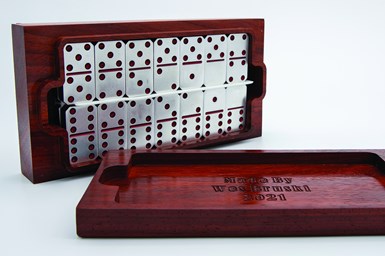Mastercam Announces Wildest Parts Competition Winners
Mastercam holds the Wildest Parts Competition each year to encourage student interest and participation in manufacturing. The competition is open to students at the secondary and postsecondary levels to create parts using Mastercam.
Share






Takumi USA
Featured Content
View More

ECi Software Solutions, Inc.
Featured Content
View More.png;maxWidth=45)
DMG MORI - Cincinnati
Featured Content
View MoreMastercam has announced the winners of its 2021 Wildest Parts Competition. The company holds the Wildest Parts Competition each year to encourage student interest and participation in manufacturing. The competition is open to students at the secondary and postsecondary levels to create parts demonstrating creativity and technical skill using Mastercam. The Wildest Parts Competition also has a division for professional Mastercam users to enter parts they created.
In the secondary division, Wes Bruski from Capital High School, Mo. submitted a domino and dice cup game set. Bruski had the idea to make a custom set of dominos and dice cup; he made the prototypes out of wood, then machined the final set.
In the postsecondary division, Gus Bronk from Washington State University submitted a keyboard. The main case is machined from a Boeing surplus-forged billet of 2000 series aluminum from the 1970s. This project contained the largest single part and the most parts Bronk has ever machined and assembled.
In the teams division, Wrindy Hauser’s team from Grand Rapids Community College’s machinist apprenticeship program submitted Thor’s hammer.
In the professional division, Andy Beach from Grand Rapids Community College submitted Ironman, which was created to test out a brand new UMC 500 Haas Mill where Beach works. Beach wanted to give the machine a thorough test by machining a multiaxis part that would push the size constraints of the machine.
Every participant receives a Mastercam T-shirt, and the winning entrants receive cash awards, certificates and other prizes for entering the competition.
Related Content
-
Tips for Designing CNC Programs That Help Operators
The way a G-code program is formatted directly affects the productivity of the CNC people who use them. Design CNC programs that make CNC setup people and operators’ jobs easier.
-
ERP Provides Smooth Pathway to Data Security
With the CMMC data security standards looming, machine shops serving the defense industry can turn to ERP to keep business moving.
-
How to Mitigate Chatter to Boost Machining Rates
There are usually better solutions to chatter than just reducing the feed rate. Through vibration analysis, the chatter problem can be solved, enabling much higher metal removal rates, better quality and longer tool life.





































.jpg;maxWidth=300;quality=90)
.jpg;maxWidth=300;quality=90)
